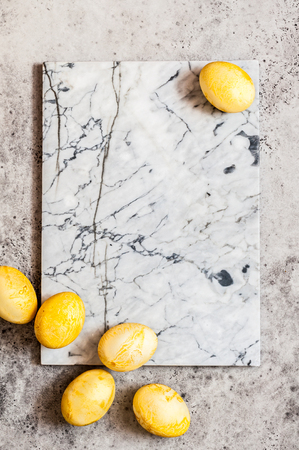1. Introduction to Popular American Countertop Materials
When it comes to remodeling or upgrading kitchens in the United States, choosing the right countertop material is a decision that has both functional and aesthetic implications. Among the most sought-after options by American homeowners are quartz, granite, and marble—each offering its own unique blend of style, durability, and maintenance requirements. Your countertop isn’t just a surface for meal prep; it’s a focal point that impacts your kitchen’s design, resale value, and everyday usability. Understanding the key characteristics of quartz, granite, and marble can help you make an informed choice that fits your family’s lifestyle and enhances your home’s overall appeal.
2. A Deep Dive into Material Properties
When it comes to selecting the best countertop for your American kitchen, understanding the technical properties of quartz, granite, and marble is crucial. Each material boasts unique characteristics that impact its performance, longevity, and suitability for daily use. Below, we break down their composition, durability, porosity, heat resistance, and susceptibility to stains in detail.
Material Composition
| Material | Composition |
|---|---|
| Quartz | Engineered stone; ~90-95% natural quartz crystals mixed with resins and pigments |
| Granite | Natural igneous rock; mainly quartz, feldspar, mica |
| Marble | Natural metamorphic rock; primarily calcite (calcium carbonate) |
Durability and Hardness
Quartz: Highly durable due to its engineered nature. It rates 7 on the Mohs hardness scale, making it resistant to scratches and chips.
Granite: Naturally hard, also about 6-7 on the Mohs scale. Excellent for high-traffic kitchens.
Marble: Softer than both quartz and granite (3-5 on the Mohs scale), which makes it more prone to scratches and etching from acidic substances.
Porosity and Maintenance Needs
| Material | Porosity Level | Maintenance Required |
|---|---|---|
| Quartz | Non-porous (due to resin binders) | Low maintenance; does not require sealing |
| Granite | Slightly porous (natural stone) | Moderate; needs periodic sealing (annually recommended) |
| Marble | Highly porous (natural stone) | High; frequent sealing required to prevent staining and etching |
Heat Resistance & Stain Susceptibility
Quartz: Good heat resistance but not as high as granite; direct contact with hot pots can damage resin. Resistant to most stains except strong chemicals.
Granite: Excellent heat resistance—can handle hot cookware without risk of burning or discoloration. Fairly stain-resistant when sealed.
Marble: Poor heat resistance compared to granite. Prone to staining from wine, juice, oils, and acidic foods even with regular sealing.
The Bottom Line: Technical Summary Table
| Quartz | Granite | Marble | |
|---|---|---|---|
| Durability (Mohs Scale) | 7 (high) | 6-7 (high) | 3-5 (moderate-low) |
| Porosity Level | Non-porous | Slightly porous | Highly porous |
| Heat Resistance | Good/Moderate* | Excellent | Poor/Moderate* |
| Main Staining Risk Factors* | Chemicals/high heat* | Lack of sealing/oils* | Beverages/acids/oils* |
*Note: Always use trivets or hot pads for hot cookware and wipe spills promptly for all surfaces.
This technical breakdown should help you assess which countertop material aligns best with the rigorous demands of an American kitchen while fitting your lifestyle and maintenance preferences.

3. Style and Aesthetic Fit for U.S. Kitchens
When it comes to American kitchen design, countertops play a pivotal role in setting the overall tone and aesthetic. Choosing between quartz, granite, and marble involves more than just durability—appearance, color options, and pattern versatility are key factors. Quartz is engineered to offer a wide spectrum of consistent colors and patterns, making it a popular choice for homeowners seeking a modern or contemporary look. Its uniformity allows seamless integration with popular American trends like all-white kitchens or bold, contrasting islands.
Granite, on the other hand, appeals to those who appreciate natural beauty and uniqueness. Each granite slab features distinct veining and mineral flecks, ensuring that no two countertops are exactly alike. This aligns well with the American preference for personalized spaces and one-of-a-kind home features. Granite’s earthy tones and dramatic patterns work especially well in traditional, rustic, or farmhouse-style kitchens commonly found across the U.S.
Marble is synonymous with luxury and timeless elegance—a favorite for high-end American homes and classic kitchen remodels. Its subtle veining and soft hues (like Carrara’s whites or Calacatta’s bold gray veins) bring a sophisticated ambiance that complements transitional or European-inspired American interiors. However, because marble can be more delicate and prone to staining, it’s often used as an accent countertop or on islands rather than throughout the entire kitchen.
Ultimately, whether you lean towards quartz’s engineered precision, granite’s natural artistry, or marble’s refined charm, each material offers unique style benefits that can elevate your American kitchen’s design and reflect your personal taste.
4. Maintenance and Longevity in Everyday American Use
When selecting a countertop for your American kitchen, understanding the real-life maintenance demands and expected lifespan of quartz, granite, and marble is essential. Busy families, home chefs, and those who love to entertain need surfaces that can withstand daily wear while staying beautiful over time. Let’s break down how each material performs in terms of cleaning routines, sealing requirements, and longevity under typical American kitchen conditions.
Cleaning Routines: What Does Day-to-Day Upkeep Look Like?
| Material | Daily Cleaning | Stain Resistance | Special Considerations |
|---|---|---|---|
| Quartz | Mild soap & water; non-abrasive cloth | Excellent (non-porous) | Avoid harsh chemicals; resists most spills |
| Granite | Mild soap & water; soft cloth | Good (when sealed) | Use pH-balanced cleaners; avoid acidic spills |
| Marble | Mild soap & water; soft cloth | Poor (porous; stains easily) | Wipe spills immediately; avoid acidic foods like lemon or tomato sauce |
Sealing Requirements: How Often Will You Need to Re-Seal?
| Material | Initial Sealing Needed? | Resealing Frequency | User Impact in American Kitchens |
|---|---|---|---|
| Quartz | No (engineered stone) | N/A | No sealing required—low-maintenance option for busy households. |
| Granite | Yes (natural stone) | Every 1–3 years depending on use and product quality. | A quick annual test with water drops can help homeowners decide when to reseal. |
| Marble | Yes (natural stone) | Every 6–12 months recommended for active kitchens. | Frequent sealing is necessary to prevent stains from everyday cooking and entertaining. |
Lifespan: Durability Under Real-Life American Kitchen Scenarios
- Quartz: Highly durable, typically lasts 15–25 years with minimal maintenance. Resistant to scratches, stains, and heat—but prolonged exposure to high heat can cause damage.
- Granite: Extremely tough and long-lasting, often outliving the kitchen itself if properly maintained. Can handle hot pots, but may chip if hit hard with heavy objects.
- Marble: Softer and more prone to scratching or etching from acids. With diligent care, can last decades—though it will develop a patina that some homeowners find charming and others may see as wear.
The Takeaway for the American Homeowner
If you’re looking for a low-maintenance solution perfect for high-traffic kitchens, quartz offers superior ease of care with no sealing required and strong resistance to common household spills. Granite provides excellent durability with only periodic resealing needed—ideal for those who want natural stone without excessive upkeep. Marble delivers timeless beauty but demands the most attention, making it better suited for less hectic kitchens or for homeowners willing to embrace its evolving look over time.
5. Cost Considerations: Upfront and Long-Term
Installation and Material Costs
When it comes to remodeling your American kitchen, cost is a crucial factor in choosing between quartz, granite, and marble countertops. Each material varies significantly in both initial purchase price and installation fees. Quartz typically ranges from $60 to $100 per square foot installed, thanks to its engineered nature and consistent quality. Granite, being a natural stone, falls within a similar but slightly wider range—about $50 to $100 per square foot—depending on color rarity and origin. Marble tends to be the most expensive of the three, often costing $80 to $150 per square foot installed due to its luxurious appeal and more complex sourcing.
Ongoing Expenses and Maintenance
Beyond the upfront investment, ongoing costs can influence your total budget over time. Quartz is virtually maintenance-free; it never needs sealing and resists stains, which means minimal long-term expenses. Granite requires periodic sealing—usually once a year—to maintain its resistance to stains and bacteria, adding a recurring but manageable cost for American homeowners. Marble demands the highest level of care: frequent resealing, special cleaners, and immediate attention to spills are essential to prevent etching and staining. These maintenance routines can add up over the years.
How Costs Impact Family Budgeting
For many American families, balancing style aspirations with practical budgeting is key. While marble offers timeless elegance, its high upfront and ongoing costs may not align with every household’s priorities or lifestyle. Granite strikes a middle ground, offering unique beauty with moderate maintenance requirements at a reasonable price point. Quartz provides predictability—not only in appearance but also in cost structure—making it an increasingly popular choice for busy families who value durability and low upkeep over decades of daily use.
Making an Informed Financial Decision
Ultimately, selecting the right countertop involves weighing both short-term affordability and long-term value. Assess your willingness to invest in maintenance, consider how much wear-and-tear your kitchen will see, and factor in the overall impact on your home’s resale value. By understanding these cost considerations specific to quartz, granite, and marble—and how they fit into the American family budget—you’ll be equipped to make a decision that balances performance, appearance, and financial peace of mind.
6. Environmental and Health Factors
When selecting the ideal countertop for your American kitchen, its essential to consider not just aesthetics and durability, but also environmental impact and health implications. Understanding how quartz, granite, and marble compare in eco-friendliness, indoor air quality, and allergen potential can guide homeowners toward a responsible and healthy choice.
Eco-Friendliness of Materials
Quartz: Engineered quartz countertops are made from crushed natural quartz bonded with resin and pigments. The manufacturing process does consume energy, but many brands in the U.S. now offer options with recycled content or utilize more sustainable practices. Additionally, quartz’s durability means less frequent replacement, contributing to lower long-term environmental impact.
Granite: Granite is a 100% natural stone quarried from the earth. While its longevity is a plus, quarrying and transportation require significant energy and may disrupt local ecosystems. However, sourcing granite locally or regionally within the United States can help minimize carbon footprint.
Marble: Like granite, marble is quarried as large slabs, often imported from overseas. This adds to transportation emissions. Marble mining can also have ecological impacts at the source; however, its timeless appeal means it rarely goes out of style or needs frequent replacement.
Indoor Air Quality Considerations
Quartz: Modern engineered quartz countertops are manufactured to meet strict standards for volatile organic compound (VOC) emissions. Most reputable brands used in American homes are GREENGUARD or NSF certified, ensuring minimal off-gassing and safe indoor air quality.
Granite: As a natural material, granite itself does not emit VOCs; however, some sealants applied during installation or maintenance may off-gas temporarily. Opting for low-VOC or no-VOC sealers is recommended.
Marble: Similar to granite, marble is generally inert but may require periodic sealing. Homeowners should check that any sealants used are compliant with U.S. EPA standards for indoor air safety.
Potential for Allergens
Quartz: Its non-porous surface inhibits bacteria, mold, and mildew growth—making it an excellent hypoallergenic option for families sensitive to allergens.
Granite & Marble: Both stones are naturally porous. Without proper sealing, they can harbor moisture and support microbial growth, which could be problematic for allergy-prone households. Regular sealing mitigates this risk but requires ongoing maintenance.
Sustainability Tips for American Homeowners
– Choose manufacturers with strong environmental certifications (e.g., GREENGUARD Gold)
– Prioritize locally sourced materials when possible
– Opt for low-emission adhesives and sealants
– Maintain countertops according to manufacturer guidelines to maximize lifespan and hygiene
By weighing these environmental and health factors alongside style preferences and budget considerations, American homeowners can make a countertop choice that supports both their family’s well-being and broader sustainability goals.
7. Final Considerations and Recommendations
When selecting the right countertop material for your American kitchen, understanding the unique strengths of quartz, granite, and marble is key to making a well-informed investment. Here’s a practical breakdown to help homeowners choose based on their lifestyle, budget, and design preferences.
Quartz: The All-Around Performer
Best for: Busy families, modern kitchens, homeowners seeking low maintenance.
Why it shines: Quartz offers unmatched durability with superior resistance to stains, scratches, and bacteria. Its non-porous surface means spills from coffee, wine, or ketchup are easy to wipe up—a major plus for American homes with active kitchens. The consistent color options also suit contemporary styles and open-plan layouts popular in the U.S.
Practical advice: If you prioritize ease of cleaning and a wide range of patterns without sacrificing strength, quartz is your best bet. Just keep in mind that direct heat can damage it, so always use trivets or hot pads.
Granite: Timeless Natural Beauty
Best for: Traditional or rustic kitchens, homeowners who value natural aesthetics.
Why it shines: Granite stands out with its one-of-a-kind patterns and colors formed by nature. It’s heat resistant—ideal for those who love to cook—and adds long-term value to American homes thanks to its reputation and durability.
Practical advice: Choose granite if you want a classic look and don’t mind periodic sealing (about once a year) to maintain its resistance to stains. Be prepared for some variation in pattern between slabs; this uniqueness can be a selling point.
Marble: Luxury and Sophistication
Best for: High-end kitchens, bakers, design-forward remodels where style takes precedence.
Why it shines: Marble’s cool surface is perfect for rolling dough—making it the material of choice for passionate bakers. Its veining delivers an unmistakable touch of elegance that elevates upscale American interiors.
Practical advice: Opt for marble if you’re prepared for regular upkeep and can accept etching or patina as part of its evolving character. Avoid placing acidic foods directly on the surface and address spills promptly.
Key Factors to Weigh Before Deciding
- Lifestyle fit: Consider how much time you spend in the kitchen and what activities are most common.
- Maintenance commitment: Are you willing to perform annual sealing (granite), immediate clean-ups (marble), or prefer a virtually maintenance-free option (quartz)?
- Aesthetics vs. practicality: Decide whether visual impact or day-to-day functionality matters more for your household.
Your Best Countertop Awaits
No single material is perfect for every home. By evaluating your needs against the unique advantages of quartz, granite, and marble, you can confidently select a countertop that not only complements your American kitchen but also stands up to years of family meals, celebrations, and everyday life.


